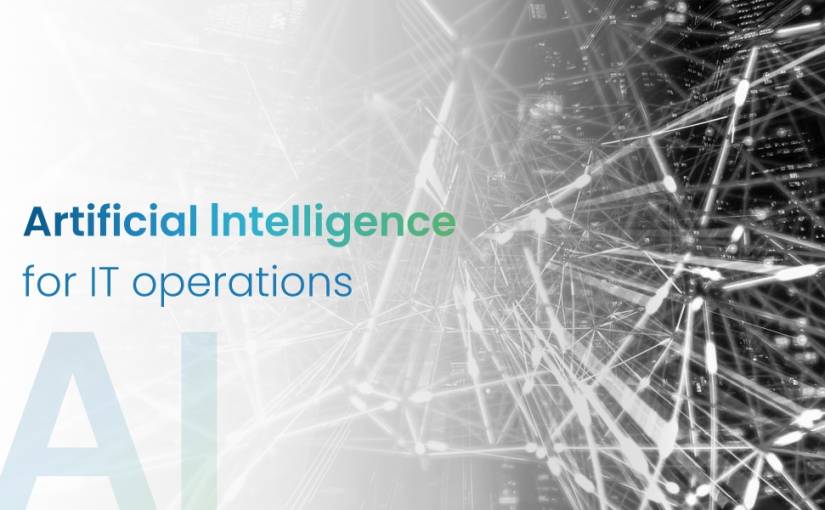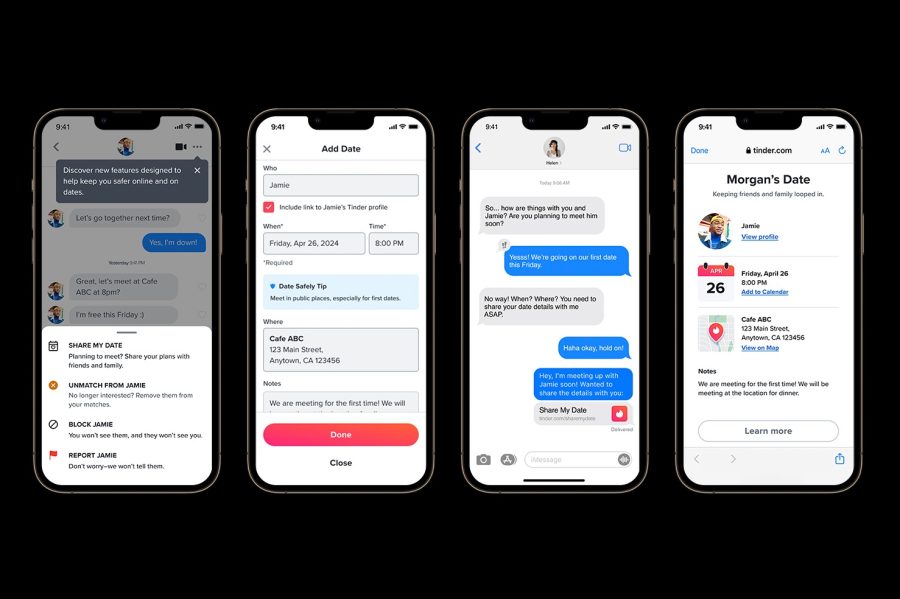Artificial intelligence for IT operations, mainly acknowledged as AIOps, is the talk of the town these days, but people talk less about the way to implement AIOps. However, to implement AIOps successfully, businesses must know the process and tools needed at each stage. And, yes, AIOps will help businesses optimize their IT operations.
IT companies operate in a complicated environment
Today, IT companies operate in complicated and extensive environments, often while connecting on-premises and private and public clouds legacy setups. IT leaders, managers, and teams are usually under pressure to serve the business with their end-to-end IT operations and services.
The enterprise’s core focus is to prevent the most significant instances and any downtime. In addition, companies want high availability and performance of their critical IT infrastructure. They also need an automated setup that leverages collected data to make it easier to make valuable decisions for faster processes.
What is AIOps?
AIOps signifies Artificial Intelligence for IT Operations, which indicates that enterprises can improve their IT operations using analytics and machine learning and evaluate the data collected from various IT operations tools. AIOps also help businesses in identifying and responding to issues in real-time.
AIOps uses machine learning to detect the essential information that allows for more efficient IT operations management. In most cases, AIOps can detect a problem before disturbing the end-users.
With its advanced abilities, AIOps can instantly identify and resolve destructive issues, even before it impacts end-users, by discovering exceptional conditions or situations that lead to the problem. As a result, organizations place AIOps in line to evaluate IT operational data to augment and automate all critical IT operations.
Why AIOps?
AIOps offers AI (artificial intelligence) for IT operations teams to get clear observability through their systems and automate numerous activities. For example, instead of relying on IT engineers to manually detect and resolve problems, through the AIOps platform, enterprises can use algorithms to detect and address the problem automatically. Similarly, instead of acquiring IT staff to manage network performance, in this case, the AIOps platform may set up conditions automatically by parsing data to find an appropriate blend of resources.
As per Gartner’s Market Guide for AIOps, ”The estimated market size for AIOps is $1.5 billion, with a compound annual growth rate (CAGR) of around 15% between 2020 and 2025.”
Benefits 0f AIOps in a Nutshell
IT operations teams may leverage AIOps solutions to turn data into actionable insights and predict problems while providing excellent end-user digital experiences. Indeed, as the IT industry continuously grows, using AI as a service will become increasingly essential for successful operations.
Remove Noise
IT environments are becoming complicated, and teams are bombarded with event alerts, making it harder to differentiate between critical signals requiring immediate attention.
AIOps reduces noise and creates related events using continuous insights from big data and machine learning, allowing IT professionals to focus on areas that need quick attention. As a result, issues will be resolved quickly and effectively, with minimal disruption to the business.
Predictive Analytics
Many infrastructure failures and unwanted events may be reoccurring, but it is challenging for IT teams to obtain actionable insights from the data manually. However, AIOps can predict events and recommend solutions to prevent or fix them fast by evaluating real-time data and analyzing historical data.
AIOps uses data from previous incident failure investigations and resolutions to perform root-cause analysis and quickly resolve issues, reducing “Mean Time To Repair” (MTTR). As a result, AIOps improve total IT operational efficiency and drastically minimize downtime and disruptions without requiring human intervention.
Enhance Collaboration and Efficiency
AIOps helps IT teams collaborate with them throughout the company, enabling them to collaborate. Interactive dashboards and customized reports increase visibility and transparency into IT processes, allowing teams to work together more effectively. As a result, IT teams may focus on strategic and innovative projects now that they are liberated from repetitive and monotonous tasks.
Improve Customer Experience
IT has evolved as an initiative-taking business partner because of increasing digitization, and expectations of IT have risen to match those of other consumer technologies.
IT incidents that can potentially impact the user experience must be addressed immediately and effectively. In many cases, AIOps can forecast future occurrences and prevent them from happening using predictive analytics and automation.
AIOps recommends self-service resolutions through knowledge base articles to enable users to address issues without waiting for IT professionals to respond. Even if unexpected events arise, AIOps can assist in promptly resolving them. As a result, the user experience can be enhanced.
Achieve Faster MTTR (Mean Time To Resolution)
AIOps can detect fundamental problems and provide remedies faster and more accurately than humans because it cuts through IT operations noise and correlates data from diverse IT environments. This fine-tuned action enables firms to set and accomplish MTTR targets that were previously inconceivable.
For example, AIOps was able to help companies reduce issue response times from 30 minutes to less than 5 minutes by implementing AIOps.
The Path to AIOps in 2022
The emergence of the notion of big data in 2005 paved the way for AIOps. The term IT operations analytics (ITOA) was coined by analysts in 2014 to explain big data analytics in IT operations. ITOA analyzed and reported on massive amounts of IT operations data to create a comprehensive view of a company’s IT estate and assist businesses in making more educated decisions.
The phrase AIOps did not enter the language until 2017 when enterprises needed to integrate all their data in real-time rose. In 2019, the term “multi-domain AIOps” was added to account for the distinction between domain agnostic and domain specialized solutions and the concept of an AIOps overlay of current systems.
Business leaders must realize the advantages of AIOps and its success in improving IT operations and infrastructure management.
Here are five steps firms may take to begin integrating AIOps into their IT programs and begin automating their operations in 2022.
Make sure AIOps is aligned with business goals
– When you choose AIOps for your organization, it is essential to ensure that the AIOps solution is aligned with business goals. An effective way to ensure this is to set up a trial on a small project and evaluate its features. By doing this, you will know that AIOps is appropriately aligned with business goals.
In addition, for further integrating AIOps into the enterprise, you must know all the features that will help your organization boost the operational processes.
Analyze and integrate everything
— The ability to pull data from anywhere—networks, servers, applications, and so on—is a crucial highlight of AIOps. This is for two reasons: AI likes data (the more, the better), and the more areas it covers, the more likely it is to discover the cause of the problem quickly.
User experience monitoring, for example, Motadata AIOps, may detect a performance issue before it manifests itself elsewhere. Then, when AI gets that information, it may analyze the balance of the data to determine which infrastructure piece is causing the problem.
Therefore, it is essential to incorporate all the company’s assets into an AIOps program when starting.
Integrate domain-specific AI
– IT professionals should explore domain agnostic AI as a next step after firms have completed a holistic integration of IT operations data. Many domain tools now include AI capabilities, but only within their respective silo. As a result, while domain tools have significant advantages, they frequently fall short of the desired result.
For example, there is a benefit when the AI in a server monitor tool detects something unusual; however, most problems have a root-cause event with several symptomatic events.
Operators are compelled to explore symptom alerts until they find the relevant one, which can be time-consuming and inefficient. Instead, firms should strive for a first-time resolution by introducing a system that identifies the issue with the first alarm itself.
On many levels, this saves time because the problem is discovered earlier, requiring less employee intervention and resulting in fewer tickets being raised.
Centralize the data bank
– Firms without AI cannot gain a complete view because each dataset is challenging to handle. The next step is to create a central data lake to include AIOps. Using the main data lake to store all data has several advantages, including the ability for machine learning to process data from many domains and the ability to baseline data from any environment.
In addition, displays that exhibit cross-domain data are much easier to create. Furthermore, with all of the data in one location, enterprises can evaluate it for trends and anomalies, resulting in more educated business decisions.
Moving confidently towards connected AI automation
– Undoubtedly, 2022 is the year for businesses to prioritize AIOps as a crucial component of more brilliant IT application and infrastructure management. Implementing an AIOps solution is to detect and fix issues faster, but where to begin the trip is unique to each company, and the order of the phases may vary. Still, most importantly, the process is required to achieve success.
Features To Look into AIOps Platform
As more business operations are digitized, expanding data volumes becomes necessary and more complex, and the AIOps market is driven by digital business transformation. It is no longer conceivable for a human to manually examine data with volumes reaching or exceeding gigabytes per minute over a dozen or more domains.
There is no way that AIOps will not play a role in the future of IT operations. This is owing to the rapid growth in data volumes and the velocity of change (as seen by the rate of application delivery and event-driven business models), which means that humans cannot be relied upon to extract insights.
Across industries, digital change is taking place, with a constant focus on digital firms becoming more collaborative and agile. IT operations and IT service management (ITSM) must evolve and concentrate on digital transformation to obtain a competitive edge. There are a few features that enterprises need to look into AIOps platforms.
- Observability
- Own proprietary database
- AI-powered APM
- Anomaly detection
- Correlation and contextualization
- High availability
- One agent for data collection
- Split screen
- In-built operating system
- Faster & more accurate root cause analysis
The first stage in enabling AIOps is to collect data, which must be collected and connected from many sources to be analyzed appropriately. These end-to-end insights throughout the whole application stack, from back-end architecture to consumer behavior and performance, will help you consistently deliver the best possible customer experience.
Business executives emphasize user engagement, and application performance is only one factor that influences overall engagement. Business leaders in some multinational businesses have stopped distinguishing between employees and customers. Therefore “user” refers to both employees and customers here.
AIOps is expected to increase productivity, speed remediation, improve user experience, and minimize operational complexity, according to IT pros. This is planned to be accomplished through AIOps’ automation capabilities, including data analysis, root cause automation, and predictive insights throughout 97% of the toolchain.
Choose the AIOps provider that is best equipped to provide out-of-the-box capabilities for the first step on the roadmap and a platform aligned with the organization’s plan (for example, helping the organization advance from event correlation to dynamic thresholds to behavior analysis with minimal effort). Gartner.
The Demand for Artificial Intelligence (AI)
The existing work environment of an ITOps team may have changed during the last year because of the pandemic situation. Many businesses have seen their employees relocate from an office to a remote location. In an already complicated IT infrastructure, the development of remote labor introduces even more uncontrollable variables. As businesses adopt a modular microservices architecture, IT environments become increasingly turbulent.
Furthermore, IT systems are spewing out massive amounts of new data regularly. According to Gartner, worldwide research and advising group, the average company’s IT infrastructure creates two to three times more IT operations data per year.
When it comes to IT problem resolution, performance, cybersecurity, and connectivity, advanced analytics and operational processes are already helping many modern businesses. End-user demands for quick responses and a more dynamic hybrid cloud IT world create a service gap that only intelligent tools can close.
Key take Away
As companies adopt innovative technology to foster innovation, IT will play a critical role in meeting dynamic business needs. However, because of this procedure and legacy tools, the pressure in the IT environment is expected to increase. AIOps can help companies with a vision turn IT into a strategic business partner that can help them enhance operational efficiency and innovation.
Image Credit: Provided by the Author; Thank you!











